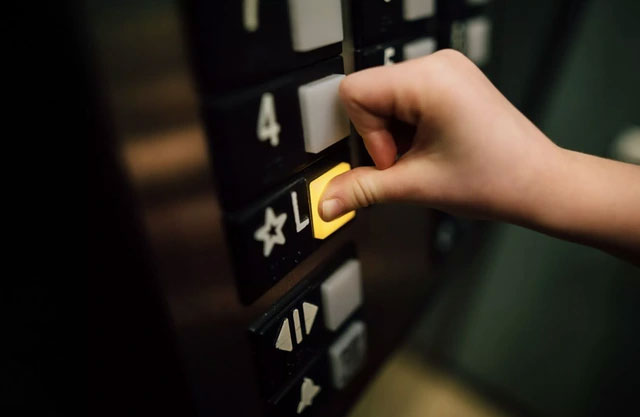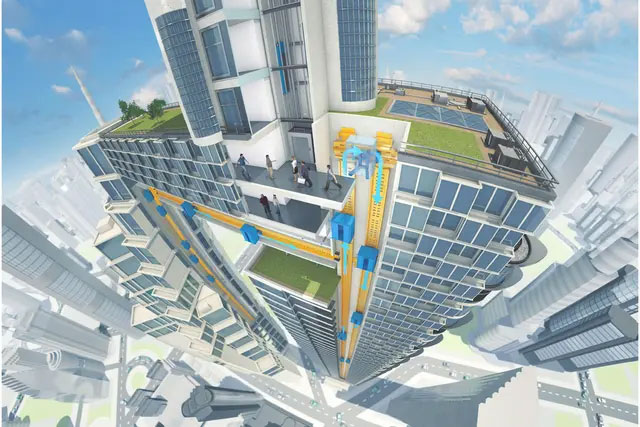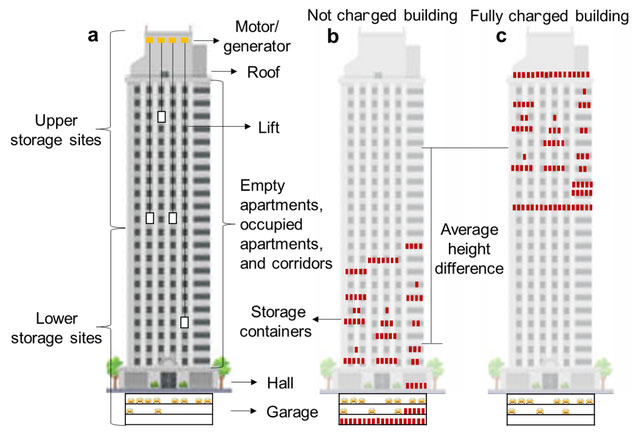Researchers from the International Institute for Applied Systems Analysis (IIASA) have proposed a gravity-based energy storage system that utilizes elevators in high-rise buildings to generate and store electricity.
The system, named Lift Energy Storage Technology (LEST), will operate using existing elevators in buildings.

This system will operate using existing elevators in buildings.
When not in use for transporting people, an autonomous device will move containers filled with wet sand or other heavy materials into the elevator and transport them between the bottom and top floors. Many elevators are equipped with regenerative braking systems that can collect energy. The regenerative braking system on the elevators, which is most effective when carrying heavy loads, will generate electricity that can be stored on-site and used when needed.
Researchers estimate that there are over 18 million elevators operating worldwide, many of which are often idle for significant periods.
The lead author of the study, Julian Hunt, mentioned that he came up with this idea after moving into an apartment on the 14th floor and spending considerable time using the elevator.
Essentially, LEST will take advantage of all the idle time of elevators by moving heavy objects—such as large containers of wet sand—from the bottom of the building to the top when there is excess renewable energy and then back down when that energy can be utilized or fed back into the grid.

LEST will utilize all the idle time of the elevators.
The IIASA team has proposed creating a series of automated pulling robots for the task of loading and unloading heavy materials into and out of the elevators. These robots could be stored along hallways, or in vacant apartments or offices.
There will be safety mechanisms in place to ensure that elevator users are not at risk when using the elevator while it is in the process of moving heavy materials to generate electricity. The weights must not be overly cumbersome to avoid obstructing people from entering the elevator. The robots are also programmed to move out of the way if a passenger enters and the elevator becomes overloaded.
Algorithms can determine the optimal times to lift heavy weights and when to harvest stored energy, without making users wait for the elevator.

Current high-rise buildings could be converted into storage for 30 to 300 gigawatt-hours of electricity.
The estimated cost of energy storage for LEST’s installed capacity is around $21 to $128 per kWh, largely depending on the height of the building. In comparison, the U.S. National Renewable Energy Laboratory estimated the installed cost of 4-hour battery systems to be $345 per kWh in 2020, and they do not expect this figure to drop below $100 per kWh until the late 2040s.
The IIASA team estimates that current high-rise buildings could be converted into storage for 30 to 300 gigawatt-hours of electricity, with the highest figure being sufficient to power the entire city of New York for about a month at current consumption levels.
However, there are several barriers between this idea and reality. First, the load-bearing capacity of the ceilings in existing buildings will need to be considered. Operators will also need to leave space at the top and bottom of buildings to accommodate the heavy materials and assess the additional wear and tear on the existing elevator infrastructure.


















































